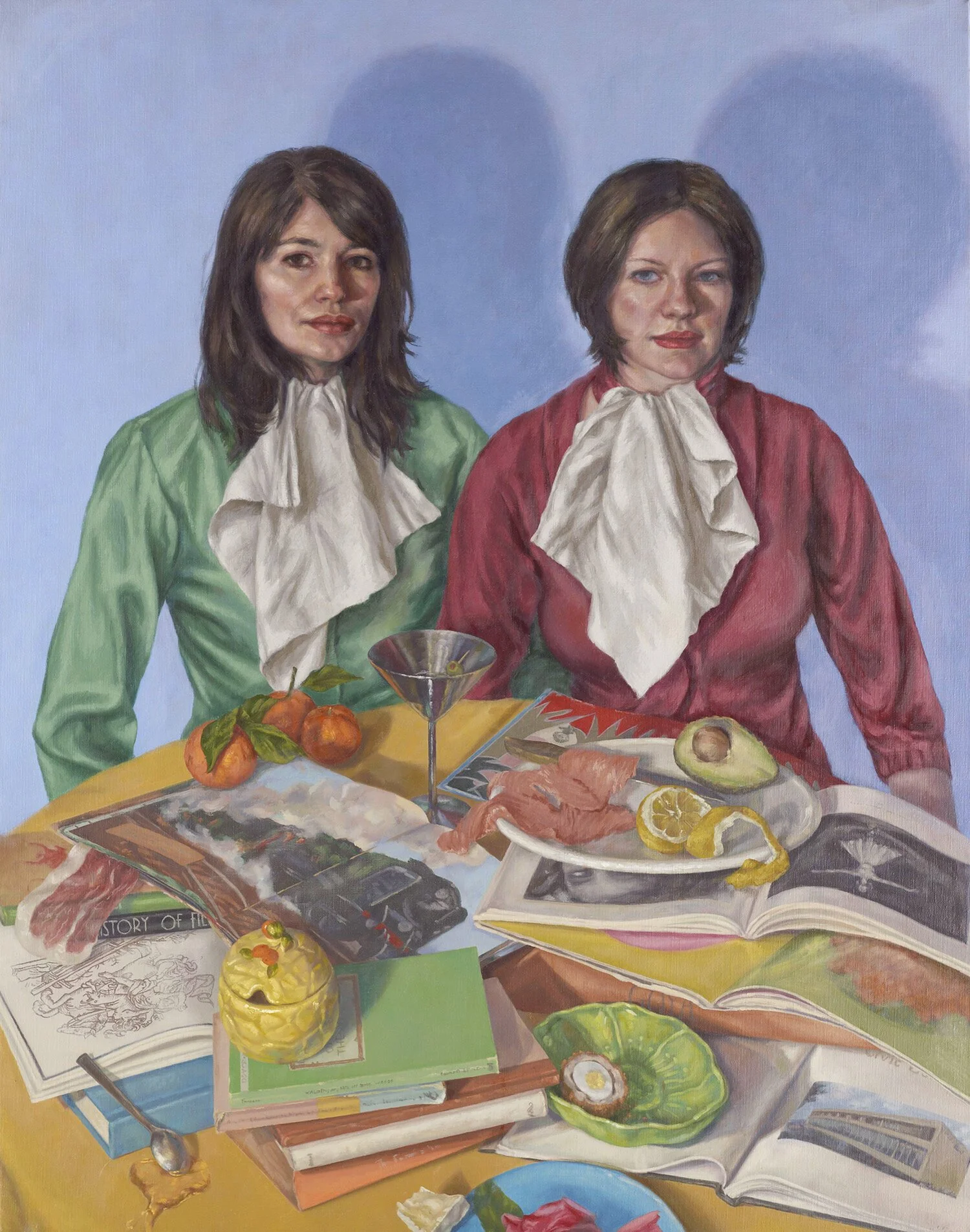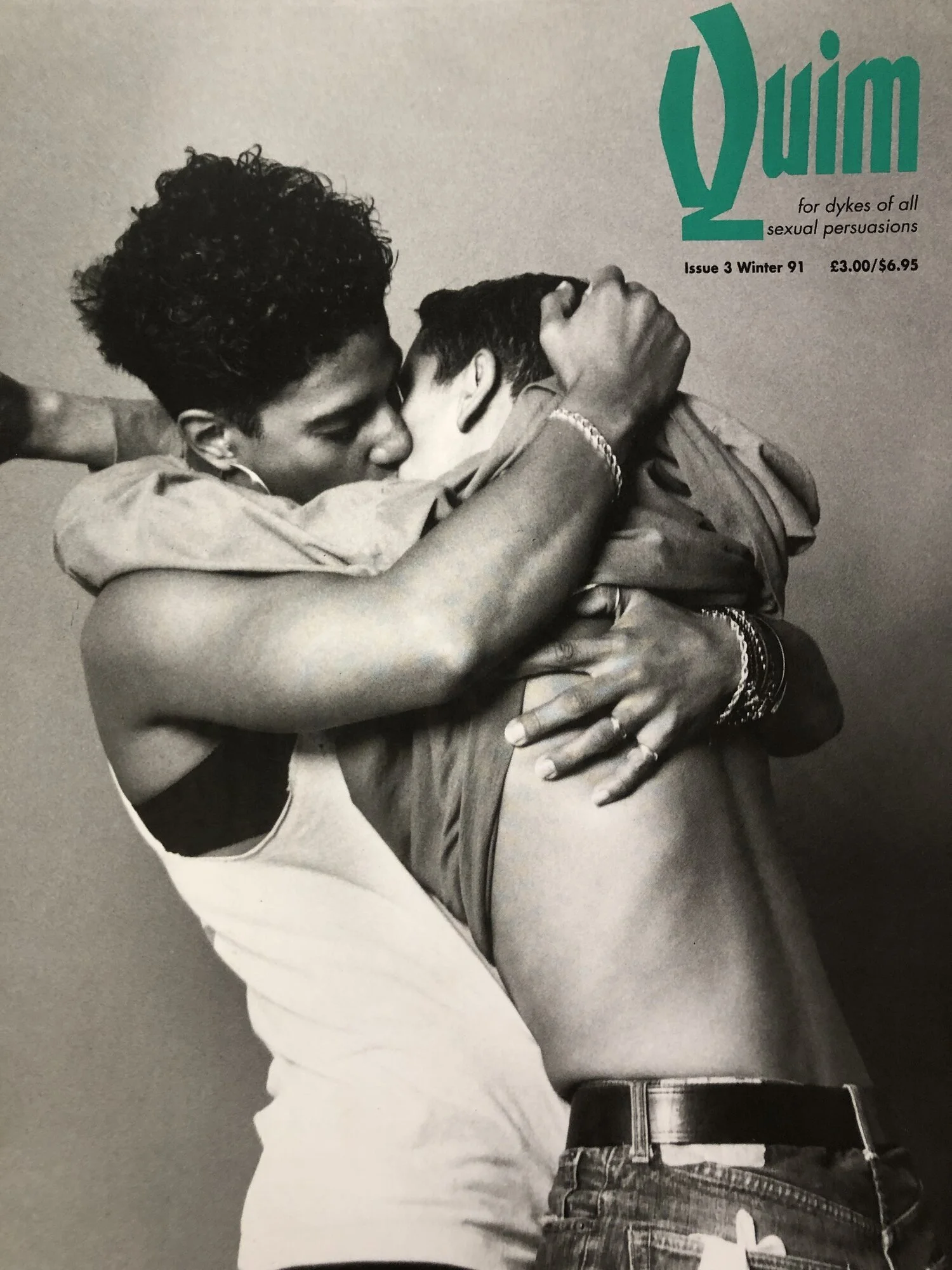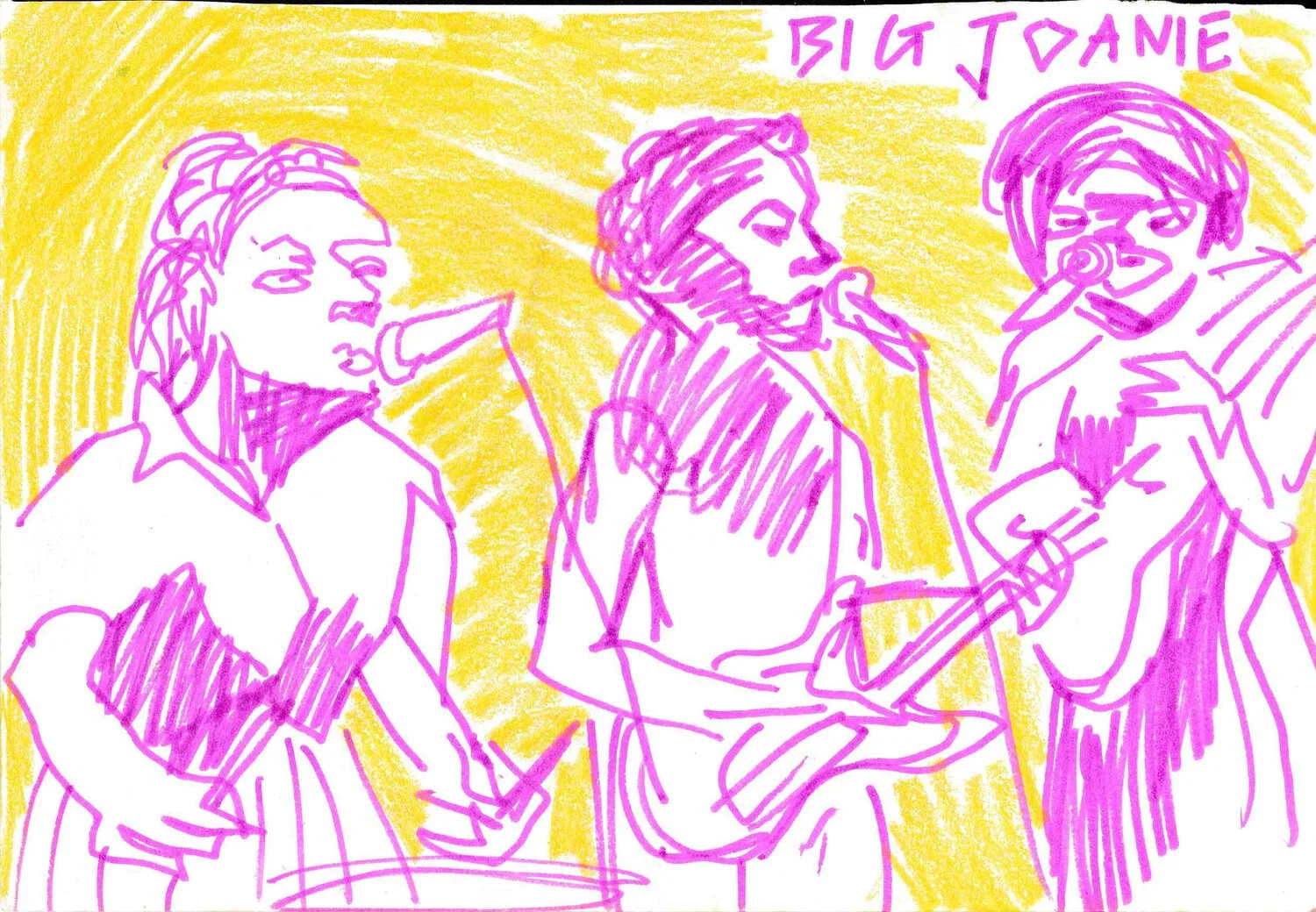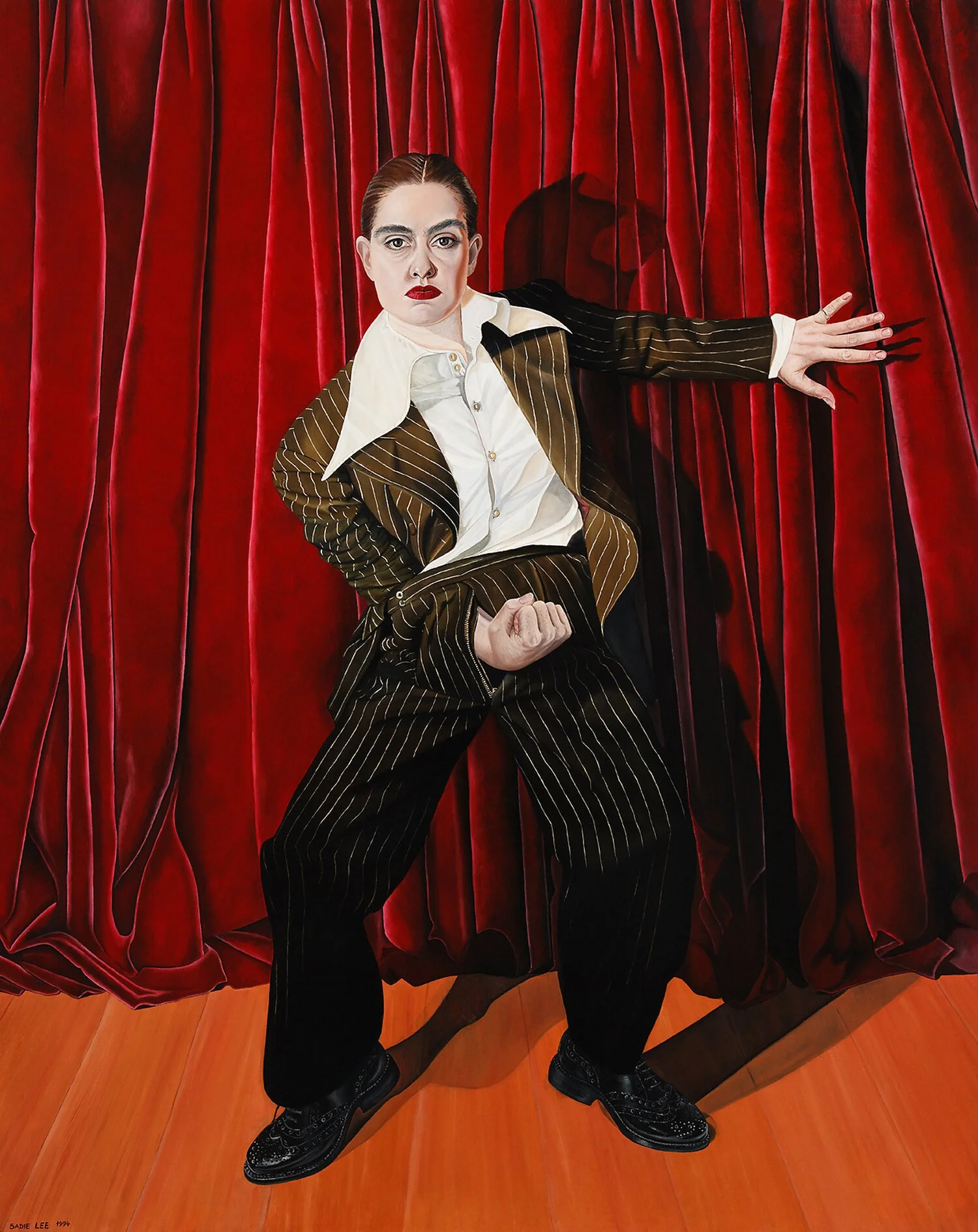Shoving From All Sides: Putting Dykes Front and Centre
Make it stand out
I first saw Jessica Tanzer’s photography when I walked into Gay’s The Word, years ago, embarking on a voyage of self discovery, and asked Jim if he knew where I could find any lesbian magazines.
I had been working at a popular gay scene magazine that year; designing the page layouts and editing the photos; mostly neutralising the skin-tone of red-faced bears seen partying at XXL. There were two free weekly magazines primarily run by and for gay men in London at the time, both of which were widely available in queer venues throughout the city, but nothing of the kind for lesbian culture. Friends and I had started talking about setting up a magazine of our own and had heard that there used to be more lesbian magazines available, many years ago. I was intrigued, hence the trip to see Jim.
Jim’s face lit up, he’s always so refreshingly enthusiastic to pass his queer literary knowledge on to others. “Oh yes!” he said, “I think we have a few downstairs! Let me get them for you. You can have a look through them up here.” Jim emerged from the basement with a pile of magazines. On the top was Quim ‘for dykes of all sexual persuasions’, Issue 3, Winter ‘91, Jessica Tanzer’s powerful black and white image of an interacial dyke couple snogging enthusiastically on the cover. I was hooked.
Time flew away from me, sitting on the carpet of the bookshop, absorbing those magazines. They felt so familiar, there was a whole language in them that I thought was so specific to us today but there it was, clear as day in 1991, 1988, 1979! Out and proud dykes, inclusive, gender-subversive, sex-positive, transgressive, intersectional, actively anti-racist, actively feminist, exciting, erotic, beautiful, playful and fun!
Jim eventually had to put the magazines away but encouraged me to continue my search at Bishopsgate Archives. There I found a treasure trove: Quim, Sappho, Lip, Bad Attitude, On Our Backs, Lesbian Tide, Lesbian London, Lesbian Connection, Shebang, Venus Infers - you get the picture, there were a lot! More images by Tanzer, Phyliss Christopher, Tessa Boffin, adorned their pages; erotic images of dykes together, in magaznes that were most definitely FOR dykes! Sadie Lee’s painting, Venus Envy advertised the opening of her first solo show ‘full of good, hard in-yer-face images of dyke sexuality’ at Manchester Art City Galleries in 1994. There was a whole world in those magazines, a world that my friends and I ached for, something that seemed to have been lying mostly dormant for far too long.
“Why does our culture not benefit from similar levels of visibility to gay-male-centred culture, or even to the idolised glamorous eccentricities of queer-arts-and-fashion-centred culture?”
As I write this, Venus Envy acts as a powerful introduction to the Rebel Dykes Art & Archive Show at Space Station Sixty-Five in Kennington. An exhibition which, over the past year, I have had the pleasure of co-curating alongside Atalanta Kernick and the Rebel Dykes. Those dreams of putting together a magazine of our own manifested in the launch of Lesley Magazine in 2019 and the networks we developed through the production of Lesley lead to Rebel Dykes’ Sibohan Fahey asking me to join Atalanta in curating the show. It has been a surreal year to curate this huge exhibition. We met with over 40 artists over Zoom and explored images from the same photoshoots I saw published in those magazines. I was introduced to many more artists and photographers too! We talked for hours and exchanged incredible stories.
I was also lucky enough to be able to introduce 13 younger contemporary artists to the show and the work flowed together with satisfying continuity. I sent Phyllis Christopher’s images of dyke punk band Tribe 8 performing in San Francisco in the 1980s to Bella (Podpadec - artist and bass player of Dream Wife) and we gushed over their performances and other dyke bands I’d learned of through the Rebel Dykes, including Atalanta’s band The Sluts From Outer Space! Bella’s drawings from Dream Wife’s 2018 tour support call-out featuring New Myths, Dirty Princess, and Girlfriend feature in the show alongside their drawing of contemporary iconic punk trio Big Joanie, echoing the passion and fire of live performance shown in Christopher’s images.
I knew from chatting with Bernice Mulenga that Lola Flash’s work had been a huge inspiration to their photography documenting friends in London’s QTIPOC party scene; hanging their work together felt like a perfect fit and the biggest thrill! Del La Grace Volcano, Tanzer, Boffin and Christopher’s influence can also be seen in the works of Mystical Femmes, India Jaggon and Imogen Cleverly of RUB Magazine, Rene Matić and more in the show. We hung Katayoun Jalilipour’s Cool Dad jacket next to the leather jackets of iconic dyke motorcycle gang The Black Widows! The list goes on.
In speaking with the press about the show, we have often been asked to comment on dyke representation and visibility. I think it speaks volumes that after coming out and moving from my small hometown in Oxfordshire to London in the hope of finding people like me to connect with, it took working in an LGBT+ venue for over a year, followed by working for a gay publication, followed by an active in-depth exploration of the history of queer culture, guided by the people I met in those spaces, to even hear that this community existed.
Why does our culture not benefit from similar levels of visibility to gay-male-centred culture, or even to the idolised glamorous eccentricities of queer-arts-and-fashion-centred culture? We are present in those spaces, it’s true, but we have a whole culture of our own beyond those walls. The harsh reality is that dyke culture does not and has never orbited cisgender men or their desires in any capacity. In this patriarchal, capitalist, heteronormative, white supremicist society, widespread public visibility requires a substantial marketing budget. It requires stable finances and the support of people in positions of power with secure mental health and structures of support. It requires the academic language and luxury of time off from paid work to write a funding proposal. These luxuries are not readily available to a community of queer women and people of other marginalised genders.
As a consequence, we scrape together whatever we have available to us to continue to make space for ourselves to exist on our own terms, often without the resources to reach audiences outside the bubble in which the spaces are created. As a curator and promoter working in queer culture and nightlife, people often ask me about “safe spaces”, how do we create “safe spaces” for ourselves, how can we police them to keep them “safe”? This poem that Kyla Wazana wrote in 1990 sums up my feelings on the subject perfectly:
And fuck the safe space
cuz we both know there isn’t one
This theory I learned at your feet:
there are only safe moments
in broken rules
The Rebel Dykes were and are rebels because that’s what we have to be. We have to break the rules of our patriarchal, capitalist, heteronormative, binary society in order to live our personal truth. We have to construct our own moments, in which the hierarchical structures of every-day society are subverted, in order to be able to breathe. We have to be actively anti-capitalist, anti-heteronormative, anti-patriarchal, gender-subversive, intersectional, feminist. We have to centre ourselves and orbit our own needs and desires over the needs and desires of those who have traditionally held positions of power. We have to do this throughout all spaces in our lives, “safe” or not, every day.
The Rebel Dykes Art & Archive Show celebrates this rebellious and radical love for ourselves and each other as a community through artworks and archive material spanning the past 40 years up to the present day. The exhibition and the documentary that inspired it (premiered earlier this year at BFi Flare and currently screening at film festivals worldwide), are self-started, community supported, DIY endeavours that required an immense amount of free labour from marginalised people in order to exist.
We hope that they will act as a more visible and accessible platform for celebrating and enjoying dyke culture. We hope that in bringing these people, and the audiences who absorb the work, together we will strengthen the orbit we so desperately need in order to shift the value systems that hold us back. I hope that people visiting the show and watching the film will be as inspired as I was that fateful day that I spent hours sitting on the iconic burgundy carpet in Gay’s The Word. I hope that visitors to the show will feel empowered to continue making their small, everyday rebellions in whatever ways that they can.
Because, in the famous words of Diane di Prima;
NO ONE WAY WORKS
It will take all of us
shoving at the thing from all sides
to bring it down.
The Rebel Dykes Art & Archive Show is currently open and free to visit at Space Station Sixty-Five in Kennington Thursday-Saturday 12-6pm until September 17th 2021.
Exhibition: @rebeldykes + @lesleymagazine | Words: Kat Hudson





